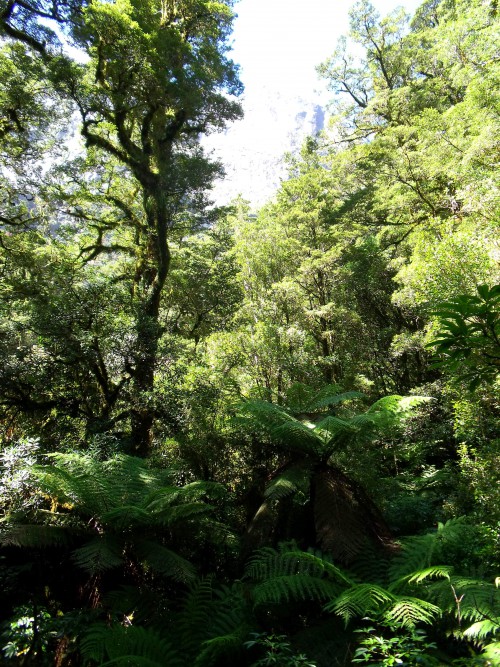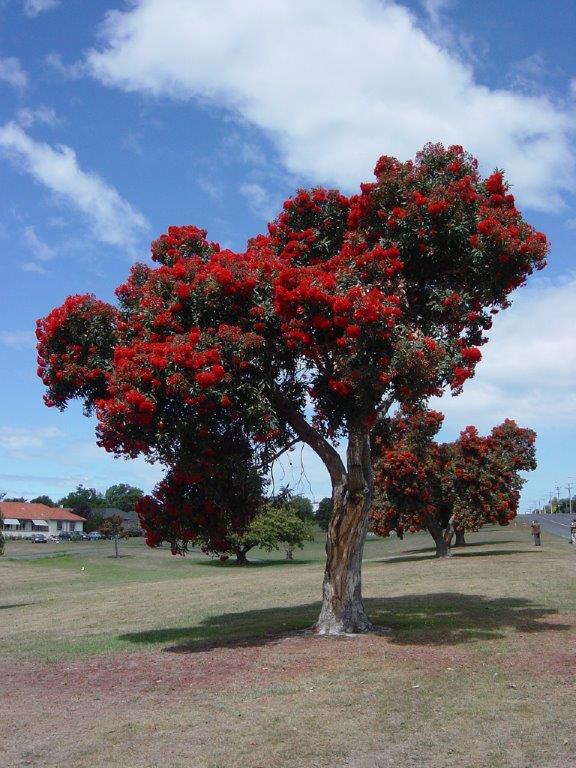 It’s often said that New Zealand is green. This, of course, refers to its environmentally friendly image, but it may as well mean its landscape. There is a LOT of green, and a lot of that is native New Zealand bush.
It’s often said that New Zealand is green. This, of course, refers to its environmentally friendly image, but it may as well mean its landscape. There is a LOT of green, and a lot of that is native New Zealand bush.
The bush really is something else. The first thing you notice is the tree ferns. In New Zealand, ferns grow tall everywhere, lining the roads and forest paths, delicate fronds lolling above people’s heads, filtering the sunlight. Some of the fronds are huge – my first few months in New Zealand, I kept expecting to see dinosaurs emerging from the foliage!
Tree ferns are so abundant in New Zealand that the ‘silver fern’ is recognisable the world over as the emblem of the All Blacks rugby team. The Maori name for the silver fern tree is ponga, and the undersides of the fronds are, indeed, silver. So striking are they that these fronds can be placed belly-up on the murky forest floor to create a gleaming arrow, a beacon to guide the way.
If you’re lucky, while you’re walking in the bush you’ll spot a fuzzy, brown coil protruding from the trees, a frond on the verge of unfurling. This is a koru, a Maori symbol of new life.
Ferns may be the most conspicuous of New Zealand’s native trees, but they aren’t the prettiest. That distinction, I think, has to go to the Pohutukawa tree. They’re known as the New Zealand Christmas Tree, not only because they bloom around Christmastime – they bloom in a festive explosion of deep, beautiful red. The vision of bejewelled Pohutukawas gathered upon the edge of the golden sand, facing the gleaming waves, is the epitome of the New Zealand summer.
When you ‘go bush’ in New Zealand, you encounter many strange trees, and many more familiar ones, but what truly sets it apart from your usual woodland is the atmosphere. It’s temperate rainforest. The air is hushed and humid. Well, hushed when there aren’t any cicadas around. When there are cicadas, it’s a never-ending cacophony of shrill, grating chirps. If crickets are violinists, cicadas are thrash metal guitarists.
 Thankfully, cicadas aren’t the only creatures that serenade the trees. The tui, for example, is a native New Zealand bird that has to have one of the loveliest songs in the avian world. The males are a treat to look at too, with black feathers that shine with metallic purples and greens, their throats adorned with brilliant, white baubles.
Thankfully, cicadas aren’t the only creatures that serenade the trees. The tui, for example, is a native New Zealand bird that has to have one of the loveliest songs in the avian world. The males are a treat to look at too, with black feathers that shine with metallic purples and greens, their throats adorned with brilliant, white baubles.
There are endless places you can go bush walking in New Zealand, and most have campgrounds attached to them. Camping is an excellent way to experience the New Zealand bush, as you can base yourself somewhere and relax surrounded by nature, rather than driving ages to get there, walking for a few hours, then driving back. I think campervans beat tents in this situation, because you can have a shower when you finish your walk!
There are strict rules surrounding camping in New Zealand. This isn’t a bad thing, seeing as we don’t want these peaceful, picturesque sites to be ruined, but it does mean that you have to make sure you’re doing things right.
My absolute favourite place to go bush walking is Karangahake Gorge. Not only is it a breathtaking piece of nature, with its dramatic rock walls, carved by a large, winding river, it is a fascinating piece of history. The paths cross abandoned railway tracks, and tunnels delve into the rock, dark and frightening – seriously, I got scared going too far into one. It’s exciting to come out of a tunnel into daylight and suddenly find yourself looking down at the river far below. You can walk along the side of the river as well and even swim in it in places. There’s a pool with a waterfall and a cave you can climb into – an awesome place to have your lunch.
Article by Abigail Simpson, author of POMS AWAY! A British Immigrant’s View of New Zealand